The Journey of Animated Storytelling: A Creator's Insight
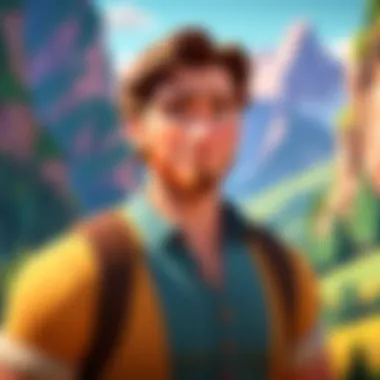
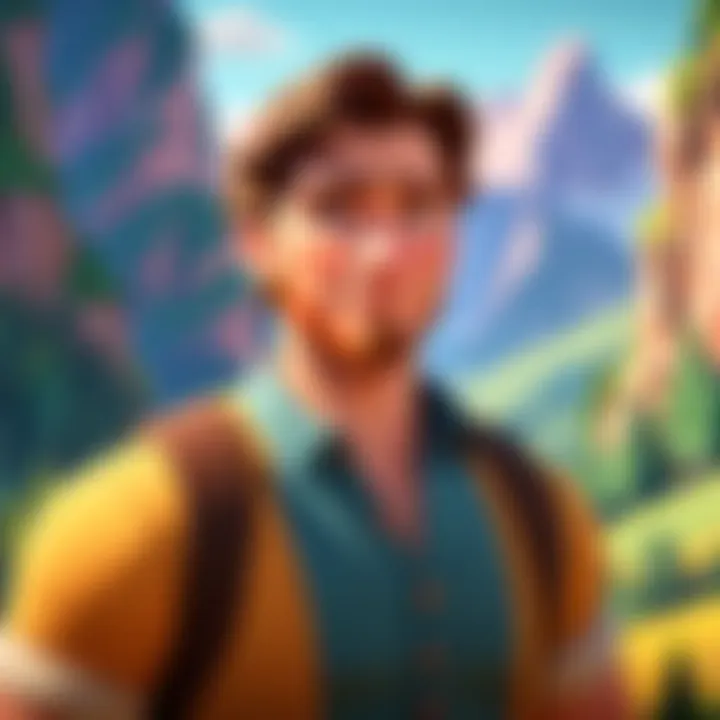
Intro
Animated storytelling has taken sharp turns and exciting twists, much like a rollercoaster ride, throughout its history. Looking back at my journey, it becomes clear that animation is more than just colorful frames moving on a screen; it is also about conveying emotions, experiences, and narratives that can resonate with us deeply. The ever-evolving nature of technology and art has pushed boundaries, shaping not only the stories we tell but how we tell them. This piece aims to map out the terrain of animated storytelling from a personal standpoint, shedding light on the creative processes involved and the influences that mold a storyteller's path.
Character Profiles
Overview of Main Characters
In animated narratives, characters form the heart of the story, providing a conduit for viewers to connect with the themes being explored. Each character plays a pivotal role, often embodying ideals or conflicts that resonate broadly with audiences. My journey through video creation had me examining characters like Shrek from Shrek and Totoro from My Neighbor Totoro. Each character's design, personality, and development offers a unique exploration of the human experience through an animated lens.
- Shrek: A green ogre with a sensitive soul, represents the struggle against societal expectations and the journey toward self-acceptance.
- Totoro: A gentle forest spirit embodies innocence and wonder, illustrating the deep bond between nature and childhood adventures.
These characters have influenced my thinking, reminding me that relatability in animation can spark deeper conversations about morality, identity, and personal growth.
Supporting Characters
Supporting characters are the unsung heroes of animated storytelling. They provide context and contrast, often pushing the main characters onto their respective arcs. Think of Donkey in Shrek; his flashy personality highlights Shrek’s more reserved demeanor, creating a dynamic and engaging narrative.
In my work, I’ve been influenced by creators like Hayao Miyazaki, where even secondary characters, such as the spirits in Spirited Away, carry layers of complexity, rounding out the narrative's emotional landscape. These characters remind us that every story necessitates a rich tapestry of perspectives to achieve resonance.
Theme Exploration
Central Themes
Animation is not merely eye candy; it serves as a rich text exploring significant themes like love, loss, and identity. My exploration of personal narratives within animation often circles back to universal truths woven into these stories. For instance, themes of friendship and bravery run prevalent in animations like My Hero Academia, where friends embark on journeys to better themselves and assist one another.
Exploring these themes ignites my passion for storytelling, driving me to create narratives that resonate on a profound, emotional level. Animation is a vessel for exploring the human condition, where each frame contributes to a larger existential conversation, layered with metaphor and meaning.
Cultural References
Cultural references play a pivotal role in grounding animated stories, making them relatable to specific audiences. From Japanese folklore in Spirited Away to Western fairy tales in films like Frozen, these references create depth and authenticity.
In my videos, I frequently draw from my own cultural experiences, weaving them into the animation. This practice not only enriches my work but creates an engaging dialogue with viewers from varied backgrounds. It's intriguing to see how animation can bridge cultural gaps while still retaining uniqueness in storytelling.
Popular Series and Recommendations
Top Anime Series of the Year
As the animation landscape evolves, various series capture our hearts with stunning visuals and innovative storytelling. Some standout shows recently gaining traction include:
- Demon Slayer: Known for its breathtaking animation and emotional storytelling.
- Jujutsu Kaisen: Combines thrilling action with intricate character development.
- Attack on Titan: Continues to push boundaries regarding narrative complexity and thematic depth.
These series exemplify the brilliance of modern animated storytelling, exemplifying the future paths we may explore.
Hidden Gems in Manga
While mainstream series dominate discussions, hidden gems also deserve recognition. Consider diving into lesser-known titles like Mushishi, which evokes an atmosphere of tranquility and reflection or The Promised Neverland, which artfully intertwines suspense with rich character backstories. These manga not only broaden the narrative scope but solidify the idea that there is a wealth of engaging stories waiting to be discovered beyond the surface.
"Animation is not just a genre; it is a way of telling stories that leave marks on hearts and minds alike."
Through these reflections on character profiles, themes, and recommendations, we can glean how animated storytelling evolves continuously, shaped by technological advancements and personal experiences alike. Each animation has a pulse, a rhythm that invites us deeper into its world, beckoning us to partake in and reflect on the stories it has to tell.
Prelude to Animated Storytelling
Animated storytelling has evolved into a vital art form that captivates audiences across age groups and cultures. Its significance lies not only in the vibrant visuals that dance across the screen but also in the profound narrative depth that can be woven into these creations. This unique blend of artistry and narrative craft serves as a bridge connecting emotions, experiences, and ideas, capturing the human condition in ways that traditional storytelling sometimes cannot.
In this exploration, we'll delve into various aspects of animated storytelling, focusing on how it has transformed and adapted over the years. This journey will highlight personal influences, the mechanics of animation techniques, and the technological advancements that have reshaped our narrative possibilities.
Understanding the Appeal of Animation
Animation's appeal lies in its ability to ignite imagination like few other mediums. Audiences are transported to worlds where the ordinary laws of physics bend and twist, where color and sound create a symphony of experiences. Unlike live-action storytelling, animation allows for endless creativity, presenting stories in genres and styles that simply cannot be replicated. For instance, the whimsical chaos of a Japanese anime series can layer profound themes beneath its lively exterior; the surreal landscapes crafted in computer-generated imagery evoke feelings far beyond mere visuals.
Moreover, the versatility of animation makes it a powerful tool for storytelling. Whether it’s addressing complex social issues or simply providing a feast for the eyes, animation effortlessly engages viewers. The unique visual language of animation opens the door to storytelling that ranges from light-hearted and humorous to dark and introspective. For many, this is what draws them into the world of animated narratives.
Personal Connection to Animation
For me, the connection to animation runs deep. Growing up, my fascination started with beloved childhood series. I recall watching Spirited Away, not just for its magical tale but for the artistry that seemed to breathe life into every frame. These experiences painted my worldview, influencing my creative aspirations. Each character's journey and every finely crafted scene kicked off my own desire to explore how stories can be told through animation.
This personal passion laid the foundation for my journey into creation. Each project began as a labor of love, reflecting not just technical skills but also the emotions and ideas derived from my avid consumption of animated works. Emotion resonates on multiple levels, and when framed through animation, it continues to drive creators forward by making personal connections to the audience possible.
Animation is not just entertainment; it is an art that communicates feelings and stories across barriers— language, culture, and age.
Thus, the profound influence of animated storytelling in my life is not merely nostalgia; it is continually evolving. With every new technique learned and story told, I find myself reflecting on how my animation journey mirrors the broader evolution of the medium itself.
My Beginnings in Animation
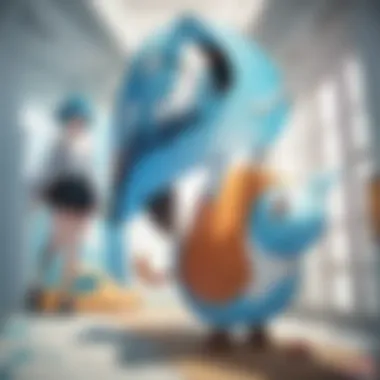

Stepping into the world of animation can feel like opening a door to a treasure chest filled with colors, characters, and stories waiting to be told. This phase is not just a starting point; it sets the foundation for everything that comes after. When I think back on my beginnings in this art form, I see a mix of excitement and uncertainty. It's a time where the mind wrestles with creativity and technical skills, both of which are essential in animated storytelling.
The beauty of this stage lies in its potential. It’s where dreams begin to take shape, where ideas flow freely, and experimentation is encouraged. The journey starts with curiosity and often leads to the discovery of one’s unique voice in animation. Realizing my own influences shaped the direction my work took and fueled my desire to advance as a creator.
Early Influences and Inspirations
In reflecting on the inspirations behind my animation journey, I often find myself drawn to the same handful of films and series that captured my imagination as a child. The influence of early works can’t be understated for any creator. Whether it’s Hayao Miyazaki's whimsical worlds or the vibrant characters of Disney classics, these touchstones help mold our creative tastes.
- Miyazaki's Films: The depth of emotion in "Spirited Away" and the adventurous spirit of "Castle in the Sky" had a significant impact on how I view storytelling. These films balance artistry with narrative, driving home the importance of character development and emotional resonance.
- Classic Disney: These films represent not just animation but also the embodiment of childhood nostalgia. Watching "The Lion King" and "Aladdin" brought me an unshakable understanding of storytelling. As such works wove rich characters and plotlines, they could capture vast audiences.
The variety and richness I saw in these pieces ignited a fire in me. I felt that if these creators could breathe life into their dreams using animation, maybe I could, too. Inspiration often comes from unexpected places, and my love for animation blossomed as I experienced a blend of cultures, arts, and personal stories.
First Encounters with Animation Software
Diving into the technical side of animation can be quite an eye-opener. My initial brushes with animation software felt a bit like learning to ride a bike. It was clumsy, exhilarating, and seemingly insurmountable at times, but ultimately rewarding. I recall spending countless hours exploring programs like Adobe Animate and Blender, which illuminated the path to transforming ideas into visual narratives.
- Adobe Animate: This platform introduced me to the basics of character design and movement. In many ways, it was a crash course in visual storytelling.
- Blender: This 3D software was my leap into more advanced animation. Learning it felt like entering a whole new universe full of possibilities.
During this time, I didn’t just build skills; I also faced challenges that tested my patience and creativity. Learning to navigate layers, timelines, and frames required tenacity. Mistakes were common, yet each misstep taught me valuable lessons. Patience became indispensable, as it often takes many attempts before achieving the desired result.
These introductory experiences profoundly influenced my journey, offering essential insights into the fusion of creativity and technique in animation. As I transitioned from a complete novice to a creator with a vision, I began to comprehend the intertwined relationship between the software and the stories I wished to tell.
The Mechanics of Animation
Understanding the mechanics of animation is vital to grasping how animated storytelling comes alive. This section focuses on the specific techniques that drive animation, emphasizing their significance in shaping narratives and enhancing emotional engagement. Animation is not merely about moving images; it's the meticulous orchestration of various methods that communicate stories effectively. Whether it's the fluid motion of characters or the detailed backgrounds that set the scene, the mechanics of animation marry art and technology in a dance that captures the audience's imagination.
Types of Animation Techniques
2D Animation
2D animation is a technique that involves creating movement in a two-dimensional space. This method stands out due to its simplicity and accessibility. The imagery might appear flat, but it boasts a charm and nostalgia that resonates with many creators and audiences alike. A notable aspect of 2D animation is its ease of learning, making it an appealing choice for beginners venturing into animated storytelling.
The appeal doesn’t just stop at tradition; the versatility of 2D animation allows for both whimsical and serious themes, thus catering to various storytelling needs. A unique feature of 2D animation is the hand-drawn aesthetic, which can imbue a sense of personal touch and warmth to the story. However, the process can be labor-intensive when it comes to frame-by-frame creation, leading to longer production times.
3D Animation
3D animation, in contrast, creates a depth that can transform a narrative. With the ability to depict three-dimensional spaces, this method offers an immersive experience that engages viewers in a different way. The key characteristic of 3D animation is its realism, enabling animators to create lifelike characters that can evoke a stronger emotional response.
The unique feature here is the camera movement, which allows for dynamic storytelling. This capability not only enriches the visual appeal but also helps convey complex narratives effectively. Though 3D animation can offer remarkable results, it often requires a more extensive skill set and considerable access to technology, which might be barriers for some aspiring animators.
Stop Motion
Stop motion is an enchanting technique that brings inanimate objects to life through meticulous manipulation. This method involves photographing physical objects in small increments and playing the frames in rapid succession. Its distinctive quality is the tactile nature of the art form, resulting in a unique visual texture that digital techniques can sometimes lack.
One of the key characteristics of stop motion is the hands-on involvement that creators have with their materials, whether it's clay, fabric, or puppets. This method lends itself quite well to storytelling styles that favor whimsy or nostalgia, as seen in works like "Aardman Animations" films. However, the laborious process means that stop motion can be time-consuming, often requiring a lot of patience from creators to achieve seamless movement.
The Role of Storyboarding
Storyboarding serves as the backbone of any animated project, working as a blueprint for the visual narrative. This pre-production tool involves sketching scenes to outline the sequence of events. By illustrating critical moments, animators can visualize how the story flows, making adjustments before getting caught up in the intricate animation process. Television and film industries rely heavily on storyboarding because it minimizes errors during actual production. Good storyboarding also helps in communicating ideas to other team members, allowing for a shared vision.
Through the mechanics of animation, the artistry combined with the technical buildup creates a symbiotic relationship, ensuring that stories resonate while drawing audiences into their worlds.
Crafting a Narrative
Animated storytelling is about more than just making moving pictures; it delves into creating a memorable experience that resonates with audiences. Right from the get-go, how you craft a narrative makes the whole difference in the success of your animated work. A strong narrative anchors the visuals, providing context and depth that keeps viewers engaged. Think of it as the glue that holds everything together. When done well, crafting a narrative can transform simple animations into rich, emotional tales that stick in the minds of the audience long after the credits roll.
Elements of a Compelling Story
When discussing what makes an animated story engaging, certain elements reign supreme. These elements—character development, themes and motifs, and setting the scene—form the backbone of any compelling narrative.
Character Development
In the realm of animation, character development is more than just coloring in the lines; it's about creating relatable figures that evoke emotions—from joy to heartache. When a character’s arc is well-crafted, it jumps out of the screen. The audience sees parts of themselves within the characters, fostering a connection that is both meaningful and immersive. A character that evolves, faces challenges, overcomes adversity, or even succumbs to their flaws makes for a strong narrative foundation.
However, not all character developments resonate equally. Sometimes they drift into stereotypical portrayals, losing authenticity. This shortcut, while tempting, diminishes the richness of the narrative. Ultimately, deeper character backgrounds can enhance the viewer's understanding and empathy, making them invested in the journey.
Themes and Motifs
Themes and motifs weave the intricate tapestry of your story, providing layers that invite viewers to dig deeper. Whether it's exploring the quest for identity, the impact of technology on human relationships, or themes of courage in the face of insurmountable odds, the choices an animator makes can be profound.
Highlighting a central theme guides the narrative flow. It gives audiences something to ponder long after the flickering images fade. However, ensure that these themes don’t come across as preachy. Subtlety often reigns supreme, allowing viewers to draw their own conclusions.
Moreover, motifs—those repeating elements or symbols—serve as anchors that can reinforce a theme or emotional tone. The use of recurring motifs can create a familiarity that feels comforting, yet allows for exploration. But going overboard may lead to repetition that numbs the audience.
Setting the Scene
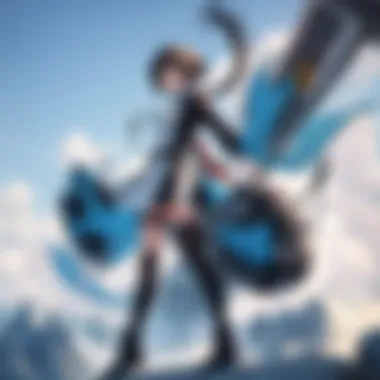
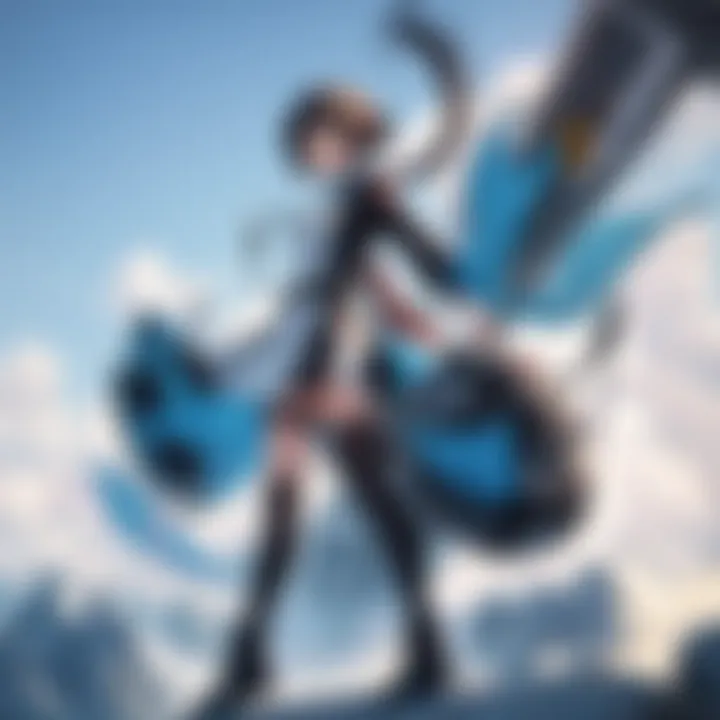
The setting functions as the stage where characters play out their stories. It’s not simply a backdrop; it's an active part of the narrative. A richly crafted setting immerses the audience, placing them squarely in the story world. Colors, textures, and sounds combine to create a sense of place that feels lived-in and authentic.
Distinct settings can also shape viewer perceptions—an eerie forest can evoke tension, while a vibrant city might spark excitement. The decision on how detailed or symbolic this setting should be holds weight. Less is sometimes more; allowing the viewer’s imagination to fill in the blanks can be quite powerful. However, neglecting the setting’s importance can result in a disjointed experience.
Balancing Visuals and Narrative
Finding the right balance between visuals and narrative is key in animated storytelling. Strong visuals can captivate and charm, but without a solid narrative, the appeal tends to fade quickly. Conversely, an engaging story without powerful visuals can read like a book without illustrations—still engaging but lacking that extra magic.
Both elements should serve each other, creating a symbiotic relationship where visuals enhance storytelling and narrative pulls viewers into the world you have crafted. The skill lies in knowing when to let visuals breathe and when to let the dialogue carry the weight.
> "Animation allows for exploration beyond the boundaries of reality, yet the heart of storytelling remains the same: we strive to connect, share, and understand each other through our narratives.
By mastering these aspects of narrative crafting, creators can elevate their animated works and make them profoundly resonant.
Technological Advancements in Animation
Technological advancements in animation have fundamentally reshaped the landscape of animated storytelling. Not so long ago, animators relied on hand-drawn frames and physical materials. Now, the digital age has paved the way for an exceptional array of tools and techniques, granting creators immense freedom and flexibility in how they convey their narratives.
The Impact of Digital Tools
Digital tools are the lifeblood of modern animated storytelling. Software like Adobe After Effects, Toon Boom Harmony, and Blender have transformed what was once a labor-intensive process into an agile endeavor where creators can animate stories at lightning speed. The impact of these tools is multi-faceted:
- Increased Efficiency: Automation features and libraries of assets drastically shorten production times. Animators can reuse characters or scenes, allowing for a tighter and more efficient workflow.
- Enhanced Creativity: With tools like 3D rendering or virtual reality integration, creators can dream up worlds that push the boundaries of imagination. This freedom allows for a diverse array of storytelling styles, from whimsical cartoons to detailed animation that reflects reality.
- Accessibility: The availability of powerful yet affordable animation software means that more aspiring animators can jump in the game. No longer the domain of just big studios, the craft is open to individual creators and small teams, fostering a diverse ecosystem of talent.
"The digital realm has created an open door for anyone with a story to tell, removing barriers that once stood tall."
Exploring Animation Software Options
As the options for animation software expand, it can feel akin to standing in a candy store: each choice alluring and promising. Picking the right tool often comes down to personal preference and project needs. Here are some notable options worth considering:
- Adobe Animate: A stalwart in 2D animation, it's user-friendly interface makes it a go-to for beginners. Moreover, its strong integration with other Adobe products facilitates a smoother workflow.
- Blender: Open-source and versatile, this software caters to both 2D and 3D artists alike. With a steep learning curve, it rewards the patient with a robust toolkit for creating stunning visuals.
- Toon Boom Harmony: Tailored for professionals, it's often used in studio environments for producing high-quality animations. Its comprehensive feature set makes it perfect for complex projects, though it comes with a price tag.
- Cinema 4D: Known for its strength in motion graphics, it's become increasingly popular among animators who crave dynamic visuals and fluid motion.
In choosing the right software, it's prudent to consider not just the features, but also community support, learning resources, and whether the program fits your specific artistic style and workflow. The right tools can empower storytellers to translate their visions into animated realities, making the journey of creation less daunting and more enjoyable.
Engagement and Community in Animation
The world of animation is not just about the solitary journey of creation; it's a vibrant tapestry woven from threads of collaboration, feedback, and community spirit. This section explores how engagement and community shape the landscape of animated storytelling, highlighting its transformative power for both creators and audiences.
Building a sense of community around animation provides a support system. When creators engage with one another, they not only sharpen their skills through shared knowledge but also foster an environment where creativity can flourish. Engaging with fellow animators can lead to exciting collaborations, leading to innovative projects that might not have emerged in isolation.
The Role of Online Platforms
Online platforms have revolutionized how creators share their work and connect with audiences. From forums to social media, these spaces allow for real-time interaction, enabling creators to receive immediate feedback on their animations.
Sharing and Feedback
Sharing one’s work on platforms like Reddit or Facebook provides a unique opportunity for growth. Feedback from fellow artists and audiences can give insights that one might overlook during the creation process. This interaction often leads to jaw-dropping improvements and adjustments in one's storytelling approach.
Some key characteristics of sharing on these platforms include:
- Accessibility: Anyone can share their work, allowing diverse voices to emerge.
- Instant Feedback: Quick responses can be garnered, providing real-time support like no other.
- Wide Reach: Animators can reach audiences globally, expanding their fan base beyond local limits.
However, it isn’t all smooth sailing. The downside may include harsh criticisms that can be disheartening, yet they often serve as valuable lessons. The challenge lies in distinguishing constructive criticism from negativity. This thin line shapes a creator's resilience.
Building a Network
Creating connections is pivotal in the animation community. Networking allows animators to find mentors, collaborators, and even potential job opportunities. Through platforms like Discord or dedicated animation forums, relationships can flourish, leading to collaborative projects that enrich one’s portfolio.
Some characteristics to note about building a strong network include:
- Resource Sharing: Creators often exchange tools or techniques that can benefit the group as a whole.
- Sustained Engagement: Regular interaction nourishes relationships and can lead to consistent collaborations.
- Support System: A network can provide emotional and creative encouragement, instilling confidence in creators at various stages of their careers.
In terms of unique features, some people benefit from the chance to collaborate with seasoned pros, helping them refine their own skills. But heed this; with networking also comes the potential for cliques or exclusivity, which can be discouraging for some aspiring animators. Striking the right balance in network interactions is essential.
Collaborative Projects in Animation
Collaboration in animation breathes life into projects that might not materialize in a solitary endeavor. Think of it this way: when different minds come together, fresh perspectives can alter the course of a narrative drastically.
Engaging in collaborative projects allows artists to:
- Enhance creativity: Working with others often sparks innovative ideas and approaches that would have gone unnoticed.
- Divide workload: Sharing tasks leads to smoother processes, ensuring deadlines are met without burning out.
- Learn from each other: Each collaborator brings unique skills, creating an environment ripe for learning and skill development.
However, challenges do arise. Differing visions can lead to conflict in creative direction if not navigated properly. But tackling these issues presents an opportunity for deeper dialogue about artistic intent and compromise—key elements in any collaborative effort.
Challenges in Animated Video Creation
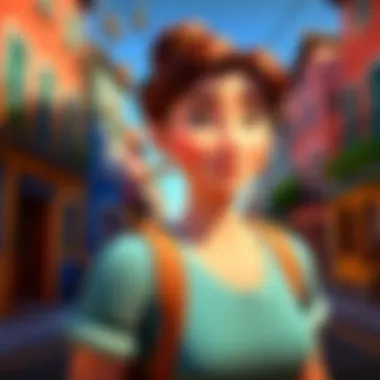
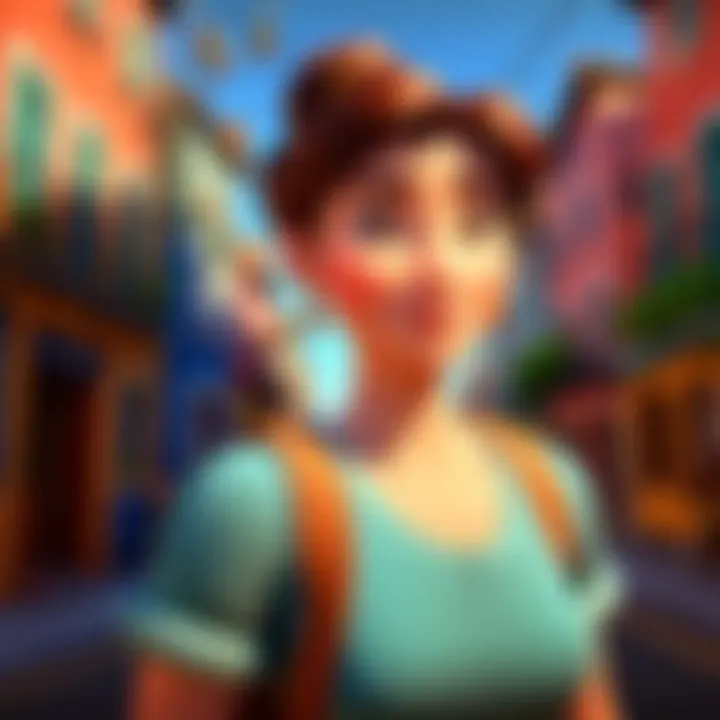
Creating animated videos is no walk in the park. Anyone who says otherwise might not be well-acquainted with the behind-the-scenes grind that comes with it. While the magic of animation dazzles audiences, the challenges in its creation often lurk beneath the surface, shaping the final product in ways that aren't always visible. This section digs into some of these hurdles, particularly focusing on creative blocks and the ever-looming deadlines that every creator faces.
Navigating Creative Blocks
Ah, creative blocks. Those pesky moments when inspiration seems to take an extended vacation. Every animator has been there—sitting in front of the screen, staring into the abyss of a blank canvas, wondering if their imagination has taken a sabbatical. There are many reasons that can lead to these blocks. It might be fatigue from long hours spent in front of the computer, or simply a lack of excitement about a current project.
To navigate through these creative droughts, it's vital to shake things up. Often, stepping away from the project for a bit can do wonders. Go for a walk, watch a film, or even dive into a book. Engaging with other creative works can reignite that spark. Many find that brainstorming with fellow creatives helps too; an outside perspective can break the monotony and inspire fresh ideas.
Here are some effective strategies to manage those annoying creative blocks:
- Change of Scenery: Sometimes all it takes is a new environment to spark inspiration.
- Set Small Goals: Break down tasks into smaller portions, making them less daunting.
- Experiment: Dabble in different styles or mediums unrelated to the current project. This can bring back the joy of creation.
"Creativity thrives on experimentation and kindness toward oneself during tough stretches."
Time Management and Project Deadlines
Time is a funny thing in the world of animated video creation. The more you wrestle with it, the more it slips from your grasp. Deadlines are the cruel mistress whom every animator has to appease. They don’t just dictate schedules; they can also affect the overall quality of the work produced. A well-crafted piece takes time, while rushed projects often show the cracks of haste.
To tackle these time management issues, establishing a robust workflow is key. Here’s how to make the most of your time:
- Create a Schedule: Use tools like calendars or project management apps to allocate specific tasks across your timeline.
- Prioritize Tasks: Focus on what absolutely needs to be done first before dabbling in smaller, less critical tasks.
- Set Realistic Timeframes: Be honest about how much time you need for each stage of production. Underestimating can lead to a backlog of work that can snowball, leading to more stress.
Balancing creativity with deadlines is no mean feat, but with the right strategies in place, animators can navigate these waters more gracefully. Remember, the journey of animating a story includes not just the craft of storytelling, but also the management of time and the creative process.
Future Perspectives in Animation
Animation isn't standing still; it’s surging forward in full gear, leaving a trail of possibilities for new stories and techniques. This section digs into the importance of looking ahead in animation, especially as we consider changes and innovations in styles and technologies. A shift in perspective can ignite fresh concepts and inspire creators to explore their artistic capacity.
The Evolution of Animation Styles
Animation styles have changed dramatically since the early days of hand-drawn frames. What was once confined to the studio silos is now an explosion of innovation. From the quaint, soft colors of traditional cel animation to the slick surfaces of CGI, each style carries with it a sense of culture and creativity. These transformations often mirror societal shifts and technological advancements.
Some notable trends in animation styles include:
- Hybridity: The blending of 2D and 3D elements allows for unique visuals, enhancing storytelling. Films like "Into the Spider-Verse" have set a benchmark by combining various techniques to create an eye-catching aesthetic.
- Realism: Pushing the boundaries of CGI, productions aim to craft visuals that evoke strong emotional responses. The level of detail seen in films today contrasts starkly with earlier techniques. No longer do animated characters feel distant; they resonate with human emotion.
- Expressions of Diversity: As more voices enter storytelling, animation styles reflect different cultural backgrounds and narratives, enriching the medium significantly. Anime, for example, has its roots in particular cultural experiences but is now influencing styles worldwide.
As creators experiment with these styles, storytelling opportunities multiply. We can expect every artist to bring forth elements from their backgrounds, resulting in a rich tapestry of animated narratives.
The Role of AI in Animation
In recent years, artificial intelligence has emerged at the forefront of animation innovation. This development prompts an array of questions: How do we navigate the intersection of technology and creativity? AI is not just a tool for creators but a collaborator in their craft. Here’s how AI is leaving its fingerprints on the animation landscape:
- Automation of Repetitive Tasks: Traditional animation can be labor-intensive. With AI, creators can automate in-betweening and other repetitive aspects, allowing them to focus on the creative side of production. This shift opens the door for more intricate storytelling as artists channel their energy into the narrative rather than mundane tasks.
- Data Analysis for Audience Engagement: AI assists in analyzing viewer preferences and trends. By gaining insights from large data sets, studios can tailor content more effectively to their audience's tastes.
- Generative Animation: Some projects leverage AI algorithms to create dynamic animations that adapt in real-time to viewer interactions or environmental factors. This new frontier pushes the boundaries of what animated content can achieve in terms of immersion and interactivity.
"AI is a tool that, when used wisely, can serve as a powerful ally in crafting animated stories that resonate deeply with audiences."
While these advancements promise a thrilling future, they also necessitate ethical considerations. Ensuring that compassion and creativity remain central in animated storytelling will be a balancing act as technology continues to ripple through the industry.
Looking ahead at the tapestry of animation, we observe an empowering blend of tradition and innovation. As the landscape evolves, so too will the stories that inspire, inform, and connect us – ensuring that the essence of storytelling remains vibrant in our rapidly changing digital culture.
The End: Reflection on the Animation Journey
As I stand at the culmination of my journey through animated storytelling, it's clear how vital this reflection is. The art of animation blends creativity with technology in ways that continually evolve. It’s not only about drawing pictures or crafting movements; it encapsulates the very essence of storytelling in a visual medium.
The animated narratives I've explored are deeply enriched by personal experiences and the lessons learned along the way. Every project, whether it flopped or soared, contributed invaluable insights into the creative process. Time spent behind the screen has deepened my understanding of the sheer power of animation to convey emotions, provoke thoughts, and inspire change. It is a lesson in perseverance and adaptation as well, where every stumble is but a step toward mastery.
Important aspects of my journey have emphasized the need for a strong narrative. Without a captivating story, visuals often fall flat. Thus, ensuring that the visual aspects harmonize with the plot has been quintessential in my animations. This synergy becomes the heartbeat of the work, drawing in viewers who might otherwise drift away.
Moreover, the relationships fostered within the animation community cannot be overstated. Engaging with others on platforms like Reddit and various animation forums has allowed for a mutual exchange of ideas. Through discussions and critiques, I have sharpened my skills and developed an acute understanding of viewer expectations and preferences.
"Animation is not the art of drawings that move, but the art of movements that are drawn." – Norman McLaren
This phrase resounds with truth, capturing how animation transcends mere visuals. My journey has reinforced that at its core, animation is about connection—between the creator and the audience, between characters and their arcs, and between diverse styles and techniques.
Lessons Learned
These past years in animation have unveiled crucial lessons that I cherish:
- Embrace Vulnerability: Sharing my work opens avenues for criticism, which ultimately leads to growth.
- Discipline in Craft: Consistency is key; learning to animate daily, even in small doses, builds skills.
- Search for Inspiration: No idea is too trivial. Inspiration can strike from the most mundane experiences—experience each moment.
- Celebrate Small Wins: Every completed animation, regardless of its outcome, represents a victory in the creative process.
In every frame drawn and every line of code written, I find reflections of my own journey—each piece a chapter in my animated narrative.
Looking Ahead to New Projects
As I gaze into the horizon of upcoming projects, excitement and trepidation intermingle. The animation landscape is shifting rapidly, with emerging tools and techniques that promise to redefine storytelling. Envisioning my next projects involves embracing innovation while staying true to my artistic voice.
Here’s what I am particularly eager about:
- Experimenting with Interactive Animation: As technology advances, creating viewer-driven experiences is an enticing prospect.
- Incorporating AI Tools: Exploring AI's potential in animation can lead to new styles and efficiencies, something I am keen to understand.
- Focusing on Social Narratives: Storytelling that resonates with social issues can engage audiences on a deeper level, and I aim to harness animation as a platform for these important messages.
- Collaboration with Diverse Artists: Working in tandem with creators from various backgrounds can provide fresh perspectives and challenge conventional narratives.
Ultimately, animated storytelling offers boundless opportunities for expression and connection. Each new project will not just reflect my growth but also contribute to the broader animation narrative, bridging audience and artist in unique, unforgettable ways.







